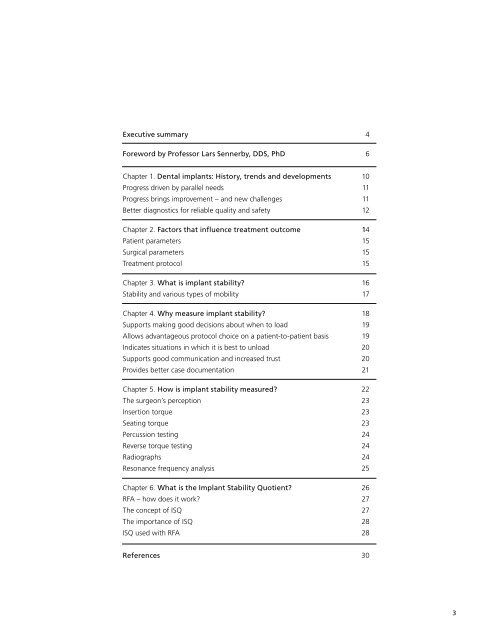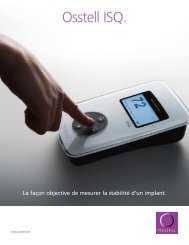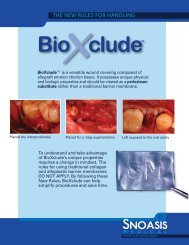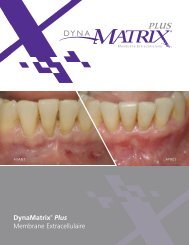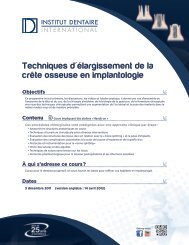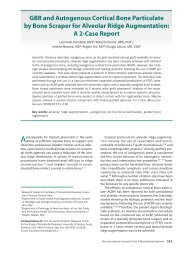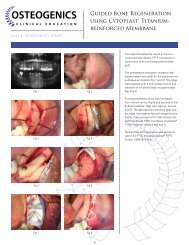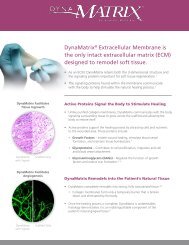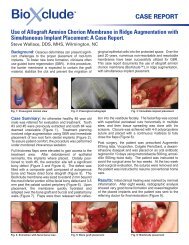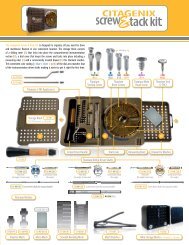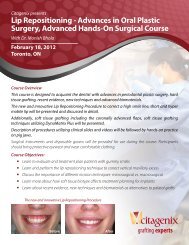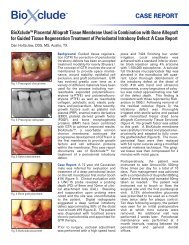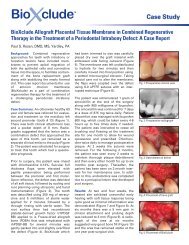The Implant Stability Quotient Whitebook - Citagenix
The Implant Stability Quotient Whitebook - Citagenix
The Implant Stability Quotient Whitebook - Citagenix
- No tags were found...
Create successful ePaper yourself
Turn your PDF publications into a flip-book with our unique Google optimized e-Paper software.
Executive summary 4<br />
Foreword by Professor Lars Sennerby, DDS, PhD 6<br />
Chapter 1. Dental implants: History, trends and developments 10<br />
Progress driven by parallel needs 11<br />
Progress brings improvement – and new challenges 11<br />
Better diagnostics for reliable quality and safety 12<br />
Chapter 2. Factors that influence treatment outcome 14<br />
Patient parameters 15<br />
Surgical parameters 15<br />
Treatment protocol 15<br />
Chapter 3. What is implant stability 16<br />
<strong>Stability</strong> and various types of mobility 17<br />
Chapter 4. Why measure implant stability 18<br />
Supports making good decisions about when to load 19<br />
Allows advantageous protocol choice on a patient-to-patient basis 19<br />
Indicates situations in which it is best to unload 20<br />
Supports good communication and increased trust 20<br />
Provides better case documentation 21<br />
Chapter 5. How is implant stability measured 22<br />
<strong>The</strong> surgeon’s perception 23<br />
Insertion torque 23<br />
Seating torque 23<br />
Percussion testing 24<br />
Reverse torque testing 24<br />
Radiographs 24<br />
Resonance frequency analysis 25<br />
Chapter 6. What is the <strong>Implant</strong> <strong>Stability</strong> <strong>Quotient</strong> 26<br />
RFA – how does it work 27<br />
<strong>The</strong> concept of ISQ 27<br />
<strong>The</strong> importance of ISQ 28<br />
ISQ used with RFA 28<br />
References 30<br />
3


